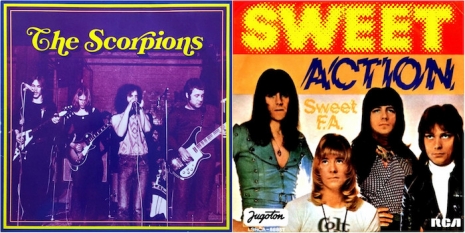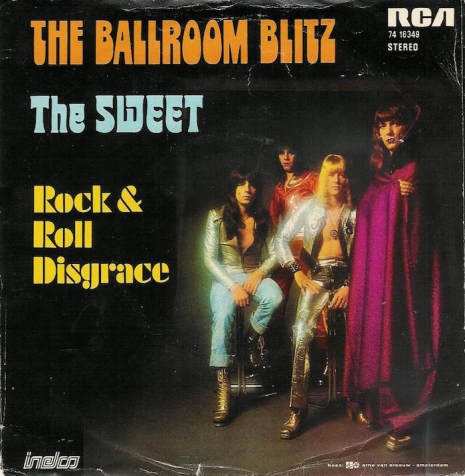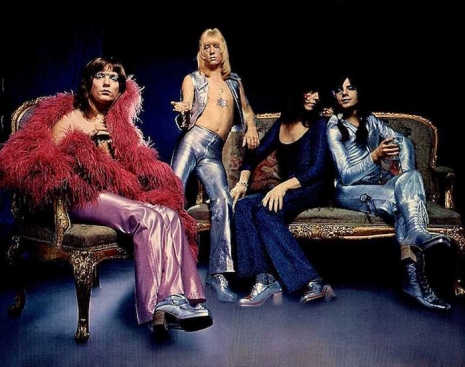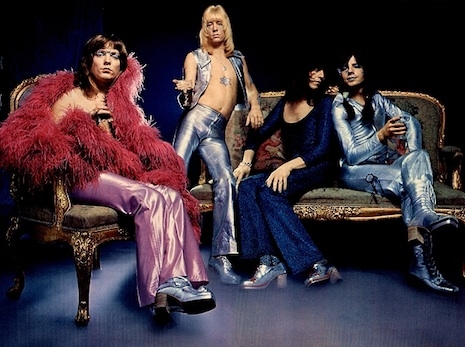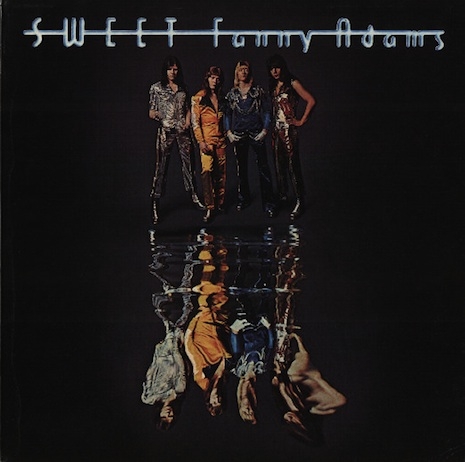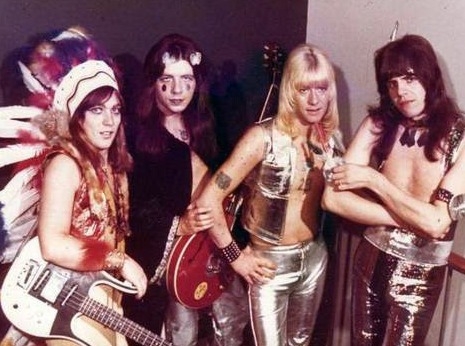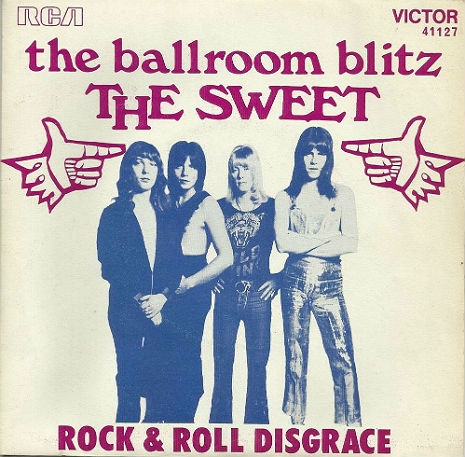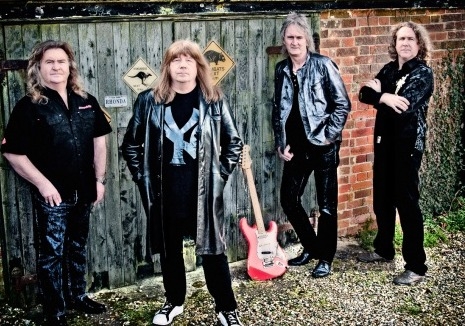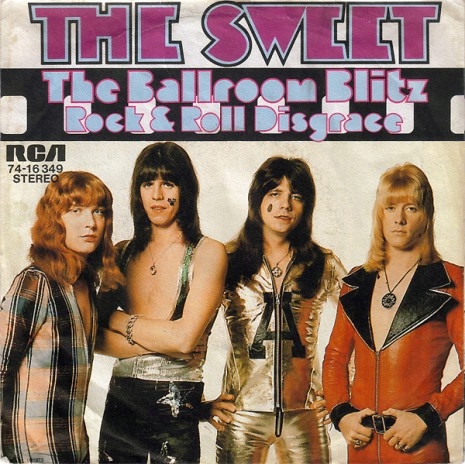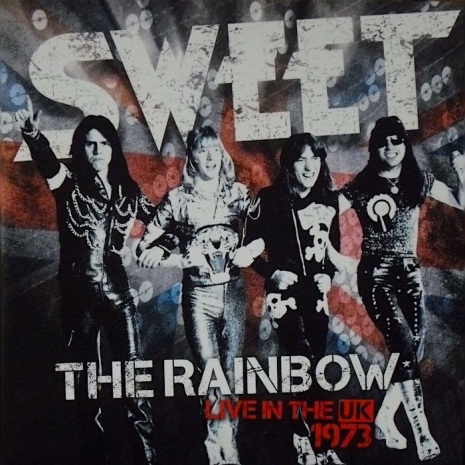
Things could have been so different for Sweet. On the verge of escaping their bubble gum pop/Glam Rock image to showcase their real talents as a hard rock band by supporting the Who at Charlton Athletic’s football ground in 1974, lead singer Brian Connolly was kicked in the throat by three thugs outside a bar in Staines, Sussex. Connolly had stopped to buy a pack of cigarettes. He thought the trio of ne’er-do-wells were about to trash his automobile when they set on him. Some thought it an act of wanton violence. Others, including the band’s bass player Steve Priest believe it was something “much more sinister.”
“It was a set-up job,” Priest says. “He’d annoyed someone. There were three guys attacking him and one of them kicked him in the throat. Brian heard him say, ‘That should do the job.’ The only one who knows the truth is an ex-roadie of ours, and he won’t tell.”
Connolly’s vocal cords were permanently damaged by the attack. He lost his confidence and started drinking heavily and taking drugs. The band pulled out of their gig with the Who. It was the beginning of the end of the Sweet. Connolly’s drinking led him to quit the band in 1979.
Sweet was always a hard rock band, despite the evidence of their poppier hit songs. Listen to some of the B-sides like “New York Connection” or “Rock and Roll Disgrace” on their classic hit singles and you’ll get a good idea where the group’s heart truly lay. Sweet was a long-haired denim and leather band. They should have been seen like Deep Purple, Judas Priest, early Queen (who on more than one occasion sound distinctly like Sweet) or even KISS. But Sweet tied themselves into an almost Faustian deal for pop fame with songwriters Mike Chapman and Nicky Chinn. This meant they were packaged as bubblegum/glam rockers with songs like “Funny Funny,” “Coco,” “Wig Wam Bam,” and “Little Willy.” Not that there’s much wrong with these tracks but they’re more suited to the Archies than say Ritchie Blackmore. Chinn and Chapman got nearer Sweet’s mark with “Ballroom Blitz” and “Blockbuster,” but they’re still not the full-on rock power of the group’s own songs like “Someone Else Will”—the uncensored version with the lyrics: “If we don’t fuck you, then someone else will”—or “Done Me Wrong All Right.”
Many of their fans recognized Sweet’s true potential as a hard rocking band, as did Pete Townshend who invited them to support the Who. But a kick to Connolly’s throat put paid to that. What’s also overlooked is the quality of Sweet’s musicianship: Andy Scott’s god-like guitar playing; Steve Priest’s heavy, heavy bass; and the sheer brilliance of Mick Tucker—whose innovation and style owes more to Gene Krupa than John Bonham—on drums.
At the frenzied height of their fame, Christmas 1973, Sweet played the Rainbow Theater, London. It ranks as one of the best concerts ever put down on tape—even if Tucker’s snare drums were missing from the multi-track recording and later dubbed in. It showcases the band’s ability to play bubble gum pop for the teenybop fans and high-octane rock for the more discerning listener. The choice tracks are the band’s self-penned numbers like “Burning”/“Someone Else Will,” “Rock ‘n’ Roll Disgrace,” “Need a Lot of Loving,” “Done Me Wrong Alright,” and “You’re Not Wrong For Loving Me.”
Part of this concert was released on Sweet’s double album Strung Up in 1975, before getting a full release on Live at the Rainbow 1973 in 1999. Take a listen and hear how great the kings of glam rock were as a balls-to-the-walls live band.
Set List: Intro—“The Stripper,” “Hellraiser,” “Burning”/“Someone Else Will,” “Rock ‘n’ Roll Disgrace,” “Wig Wam Bam,” “Need a Lot of Loving,” “Done Me Wrong Alright,” “You’re Not Wrong For Loving Me,” “The Man with the Golden Arm,” “Little Willy,” “Teenage Rampage,” Rock ‘n’ Roll Medley—“Keep a-Knockin’”/“Shakin’ All Over”/“Lucille”/“Great Balls of Fire”/“Reelin’ and Rockin”/“Peppermint Twist”/“Shout,” “Ballroom Blitz,” and “F.B.I.”/“Blockbuster.”
Previously on Dangerous Minds:
‘The Ballroom Blitz’: The teenage rampage that inspired Sweet’s greatest hit
‘All That Glitters’: Vintage doc on legendary British glam rockers, The Sweet






